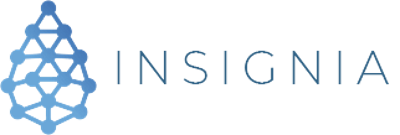
INSIGNIA Operational Group: Solution for the implementation of smart, interoperable, and sustainable technology in irrigation management in Irrigation Communities
- Type Operational group
- Status In progress
- Execution 2023 -2025
- Assigned Budget 286.291,00 €
- Scope Autonómico
- Autonomous community Andalucía
Detailed State-of-the-Art Study To conduct a detailed analysis of the current state of the art methods and the latest technologies that the project can benefit from. The aim is also to generate knowledge and gain a comprehensive view of the contributions the project can make to society.
The work carried out will also serve to understand the relevance of innovations and contextualize the use of technology in the agricultural sector. Thus, it will focus from the outset on the search for national and international references, focusing on the latest advances in irrigation technologies.
This activity will allow you to learn in depth:
- The lines of research related to the project.
- Research centers and groups, teams, and individuals leading similar lines of work that allow for the transfer of methods and technology.
- Currently used and emerging systems that are appearing.
- Tools, platforms, and utility models related to and applicable to the project.
- Applicable regulations and legislation.
- Conferences, trade shows, and professional events to be held during the project. A state-of-the-art report will be prepared as a result.
Network and communications device analysis to determine the actual coverage level of different communication technologies and select the most suitable devices for each. To ensure a high-quality connection between the network's various sensors, the signal strength and quality between the different devices will be evaluated.
Knowing field coverage is essential, as it will allow transmission power to be adjusted, the location of network components to be improved, or new antennas to be installed if necessary. The terrain will be analyzed, locating ideal locations for gateways. Obscure areas will be identified to determine the appropriate communication technology, studying whether possible additional communication protocols are necessary to serve as routers for nodes without coverage to achieve 100% coverage at the designated points.
The most appropriate communication technology or combination of communication technologies for the project's objectives will be defined. This activity aims to comprehensively characterize the communications network in the pilot irrigation community. The plan is to precisely determine the geographic coverage level and the list of sensors selected for installation. The goal is also to identify and install the most appropriate sensors for data recording.
Development of a specialized IoT platform for the agricultural sector. This activity will involve developing a cloud-based management platform and analyzing irrigation system data. Once the requirements have been determined, a study of sensor locations and types is conducted. This involves analyzing the different types of sensors available on the market and their adaptability to the specific project situation. This includes evaluating the costs, efficiency, reliability, ease of use, and reliability of the sensors.
The information needs to be integrated into the platform will be identified. The platform's underlying architecture will be defined, around which the information to be presented will be structured.
The objectives planned for the design of the cloud platform are:
- Reduce costs in technological infrastructures.
- Increase efficiency and productivity.
- Streamline maintenance processes.
- Increase reach and analytical capacity.
- Achieve greater security of existing information.
Development of a Transparency and Document Management Platform The purpose of this activity will be to develop a platform for managing information and communicating with farmers. A set of indicators will be defined to regulate and guarantee an adequate level of transparency for the data present on the platform. All existing transparency regulations will be taken into account for inclusion in the platform. Document management will consist of efficiently and systematically controlling the creation, reception, maintenance, use, and disposal of documents and data from sensors. Information, documentation, and communication needs for irrigators or between irrigators to be integrated into the platform will be identified. The basic architecture of the platform, around which the information and documentation to be presented will be structured, will be defined, as well as the communication tools to be developed. The necessary cybersecurity protocols and services will be implemented to comply with current regulations. Mandatory protocols and services regarding the protection of personal data and the guarantee of digital rights will be applied. The existence of this platform will allow the exchange of documentation in electronic format between users and with public authorities. Finally, there will be an operational Transparency Cloud Platform.
Data Analysis and Decision-Making The analysis of data from the array of sensors used is an essential tool for joint information management. The objective of this activity is to provide a tool to better understand the operating environment surrounding the entire Irrigation Community. This will help make more reliable decisions and reduce the risks associated with potential deviations, identifying opportunities for improvement and enhancing the various data acquisition processes by the network's sensors. The analysis of data obtained from the sensor network is seen as a critical activity prior to its incorporation into the IoT management platform. Throughout this activity, a series of steps will be carried out to ensure that the recorded data is accurate, reliable, and relevant. Based on the results obtained, corrective and adjustment measures will be proposed, if necessary. The interpretation of consumption data (water and energy) during irrigation is a key task of the project. Irrigation water consumption has a significant impact on productivity. Correct interpretation of the data recorded by the sensors will allow the predictive model to make the most accurate decisions regarding water quantity, pressure, and energy consumption. The result will be a validation report on the data recorded by the sensors, and corrective measures will be established.
Development of Predictive and Performance Models Predictive models aim to predict the future behavior of data based on past patterns and trends from data. These models are used to make estimates of future behavior and to aid decision-making. These patterns are often used to predict the future behavior of data. The predictive models covered in this work package will be used to characterize patterns that allow for future determination of water and energy consumption, as well as their influence on fertilization, in order to improve the efficiency and productivity of agricultural holdings. A predictive model will be developed capable of forecasting the quantities of water demanded by each sector of the irrigation community. This aims to achieve more effective use of water resources. Complementing this predictive model, another energy-focused model will be developed for better management of the pumping system, achieving efficient activation depending on the hourly electricity price. This action aims to obtain the necessary knowledge to develop various predictive models that will allow a better understanding of current consumption. The result will be predictive models implemented on the IoT platform.
Dissemination of Results: The success and application of the results will depend largely on the communication and dissemination activities carried out. Dissemination activities include actions to transfer information about the entire development of the innovative project, as well as the final results obtained and the ICT tool created.
The outreach plan activities are grouped into 9 action blocks, which will take place throughout the project period:
- Creating a website.
- Production, editing, and dissemination of four digital newsletters on the project's progress.
- Press Office Service.
- Creation of an informative brochure about the project with its main objectives.
- Editing a video summary of the project.
- Celebration of a final outreach day.
- Design of executive report of project results.
- Twitter posting schedule.
- Production of explanatory supports for the program.
Management and Coordination. State-of-the-art analysis and research on the latest advances related to the project. Network and communications device analysis for high-quality connections between network sensors and optimal coverage analysis. Development of an IoT platform for irrigation management and data analysis. Transparency and Document Management Platform. Data analysis to better understand the irrigation operating environment. Development of predictive and performance models to assist in decision-making. Dissemination of project results.
"Let's value water" was the slogan used by the United Nations on March 22, 2021, for World Water Day to raise awareness among the population. In the case of Andalusia, the water stress situation has worsened in recent years due to a greater scarcity of water resources. Given this panorama of water resource scarcity in Andalusia, it is necessary to find solutions. Solutions can be divided into two large groups, depending on whether they are focused on increasing supply or reducing demand. The most effective is improving the efficiency of water resource management through technology and innovation.
From its inception, the project has been aligned with the main objectives of the European Innovation Partnership regarding agricultural productivity and sustainability. In the field of agriculture and rural areas, in accordance with the Europe 2020 Strategy and the general objectives of the Common Agricultural Policy, innovation is considered an essential cross-cutting priority for achieving the objectives of European rural policy. This fact is also highlighted by the European Commission in its "country report." It refers to the need to reduce water loss, identifying it as a reform priority for Spain. Regarding European Agricultural Policies, they focus on the sustainable use of water resources and reducing the negative effects of water degradation.
Develop and implement a universal and intelligent tool for managing water and energy resources through the digitalization of the irrigation system.
The following specific objectives will be addressed:
- Analysis of energy system variables and water distribution.
- Implement a digital and automatic monitoring system.
- Develop predictive models to simulate irrigation systems.
- Development of a comprehensive irrigation management platform.
- Disseminate the benefits of the project to accelerate the digital transformation of irrigation in Andalusia.
- Coordinator/entity name: Metalworking and Transport Technology Center-CETEMET
- Postal address: Avda.
- Coordinator/entity email: mcarmenlopez@cetemet.es
- Telephone: 953696719
The Annual Summary Report for the first year of the project was presented in September 2024. It outlined all the progress made by each partner over the first few months, indicating the percentages of completion achieved, as well as the level of achievement of expected results. The project is currently 60% complete, with budget expenditures of approximately 41%.
- Centro Tecnológico Metalmecánico y del Transporte-CETEMET
- Smart Fenix SL (m.reyes@smartfenix.es)
- Universidad de Córdoba (jmdiaz@uco.es)
- FERAGUA (fca@feragua.com)
- AgroAir Technology S.L. (info@agroair.es)
- Centro Tecnológico Metalmecánico y del Transporte-CETEMET





